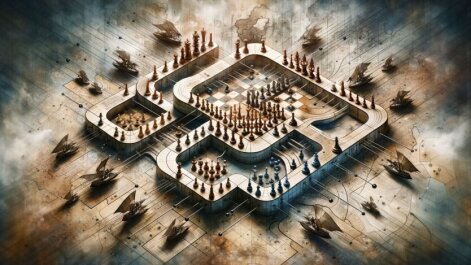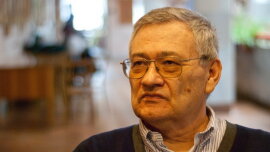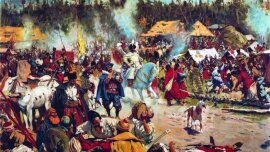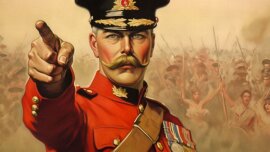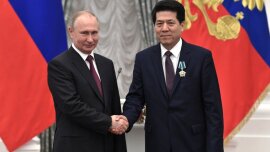In this short article I would like to write about some ideas that came to my mind during this difficult time. And which may become useful when making decisions by the Ukrainian military-political elite.
Nobel Prize winner in physics Paul Dirac said that new sciences are made in this way:
“First of all, we must discard all so-called “physical ideas,” for they are nothing more than a term for designating the outdated prejudices of previous generations. You should start with a beautiful mathematical theory.
“If it is really beautiful,” says Dirac, “it will certainly turn out to be an excellent model of important physical phenomena.” So we need to look for these phenomena, develop applications of a beautiful mathematical theory and interpret them as predictions of new laws of physics.
Polish mathematician Stefan Banach wrote: “A mathematician is one who knows how to find analogies between statements, a better mathematician is one who establishes analogies of proofs, a stronger mathematician is one who notices analogies between theories; but one can also imagine someone who sees analogies between analogies.”
Based on these two statements, we can draw an almost mathematical conclusion that in order to create an effective military strategy it is necessary to find a beautiful strategy (beautiful in the mathematical sense, according to Dirac), and which, according to Banach, should be similar to some successful military strategy in the past (if we use the above his saying above) and apply it to a present physical situation.
Such a physical situation today is the war with Russia.
In my opinion, a beautiful theory is the strategy of indirect action. The beauty of a theory is a subjective concept. But the characteristics of a good strategy is that its effectiveness is justified by low energy expenditures in comparison with an alternative strategy.
A beautiful strategy is when you achieve a lot, but with little means. The strategy of indirect action (so it is believed) was first used in the West by the Theban commander Epaminondas at the Battle of Leuctra in 371 BC. The usual practice of the Spartans (and the Greeks in general) was to position their heavily armed infantry in a solid mass, or phalanx, eight to twelve men deep.
In a break with tradition, Epaminondas concentrated his cavalry and a fifty-man-deep column of Theban infantry on his left wing and directed this force against Sparta's right flank. His smaller and weaker columns in the center and on the right flank were lined up so that they gradually moved to the right and rear of the marching column, forming an echelon.
The central and right flanks of Thebes were contained and covered by skirmishers and cavalry. The infantry entered the battle, and the Thebans defeated the right wing of the Spartans. The formation of twelve Spartans on the right flank could not withstand the strong blow of an enemy column of 50 people. The Spartan right-wing force was driven back with about 1,000 casualties, 400 of whom were among Sparta's most experienced soldiers, including King Cleombrotus. This was the indirect action of Epaminondas.
For the first time, however, the strategy of indirect action was declared not in Western civilization, but in the 5th century BC by the Chinese strategist Sun Tzu in his work “The Art of War.” Then, centuries later, it was formalized by the British Basil Liddell Hart into a set of rules in his work “The Strategy of Indirect Actions.” B.L. Hart wrote that the reason for the two world wars in the 20th century was the fact that the concept of Carl Clausewitz, described in his treatise “On War,” where war was the main resolution of contradictions between states, prevailed in the general staffs of Western countries. When war is inevitable, it should begin.
War, Clausewitz wrote, is the continuation of politics by other means. And Western countries switched to war, in case of failures in international politics, quite willingly (remember the jubilant crowds in European capitals at the beginning of the First World War). For Sun Tzu, “hot” war is only in third place in the set of methods of warfare. It is quite possible not to go to it. And we even need to strive for this, since wars are extremely destructive for the economy and the life of societies.
The Chinese are very pragmatic about this. Before moving on to a “hot” war, as a way to resolve contradictions, state politicians, according to Sun Tzu, should try to “break the enemy’s plans,” and if that doesn’t work, then try to “break his alliances.”
And only if these two strategies fail is it necessary to proceed, in fact, to military action. If the doctrine of Sun Tzu had dominated the general staffs of the West, then two of the bloodiest wars in human history, Hart wrote, could have been avoided.
Ukraine has been in a full-scale military conflict with Russia since 2022, which was suddenly started by Russia (few people in our country expected this “hot” war). Today in the West, and here, experts have already come to the conclusion that it is impossible to win a war on a military level.
The incomparability of the military-economic potentials of Ukraine and Russia (Russia’s advantage), and the West’s reluctance to escalate the conflict in Ukraine, which leads to a lack of adequate military supplies to Ukraine, is proof of this. If victory on the battlefield is nevertheless won in the future, it will be a “Pyrrhic” victory, which can lead to such a weakening of the country’s demographic potential that Ukraine will cease to exist for precisely this reason.
Therefore, we need to move on to the idea of the current war as taught by Sun Tzu, and move on to the implementation of decisions of a predominantly non-military nature described by Sun Tzu (“break the enemy’s plans”, “break his alliances”).
These actions are of a completely different nature than those that we are carrying out today. The Ukrainian political elite needs to move to the prevailing implementation of a set of solutions from the arsenal of the Cold War, which was won by the West without moving to direct military action on the battlefield. This strategy is described in detail by Peter Schweitzer in the book “Victory. The role of the US administration’s secret strategy in the collapse of the Soviet Union and the socialist camp.”
This is a classic description of the implementation of Sun Tzu’s strategy, when the West focused on the first two tasks from Sun Tzu’s classification, namely, trying in every possible way to destroy the plans of the USSR elites and break up its alliances. As we remember, this was accomplished.
Today, positional actions at the front (as the need to contain the enemy) and the strategy of indirect actions (a mathematically beautiful theory, and the presence of an analogy with a successful theory, as taught by Dirac and Banach) are the solution to the current situation and the current “hot” war with Russia.
These are the actions that the Ukrainian elites need to focus on in order to achieve a strategic victory (not a military one, which is impossible, first of all, for economic reasons) over Russia. This victory will not be of a strictly military nature, but this will not make it any less valuable.
And this strategy must be secret.
